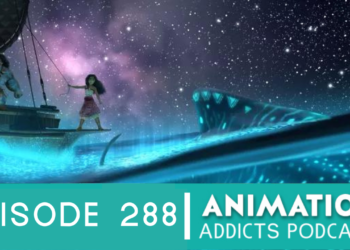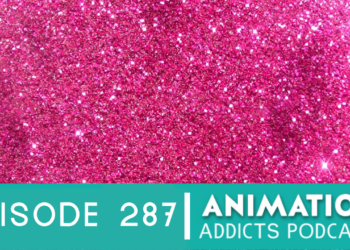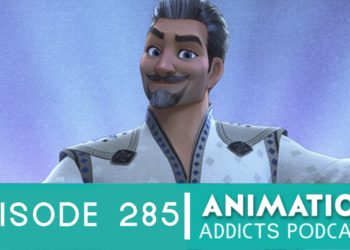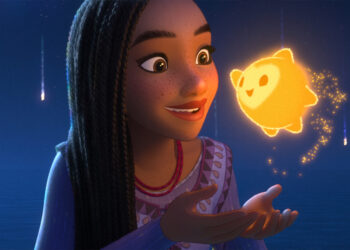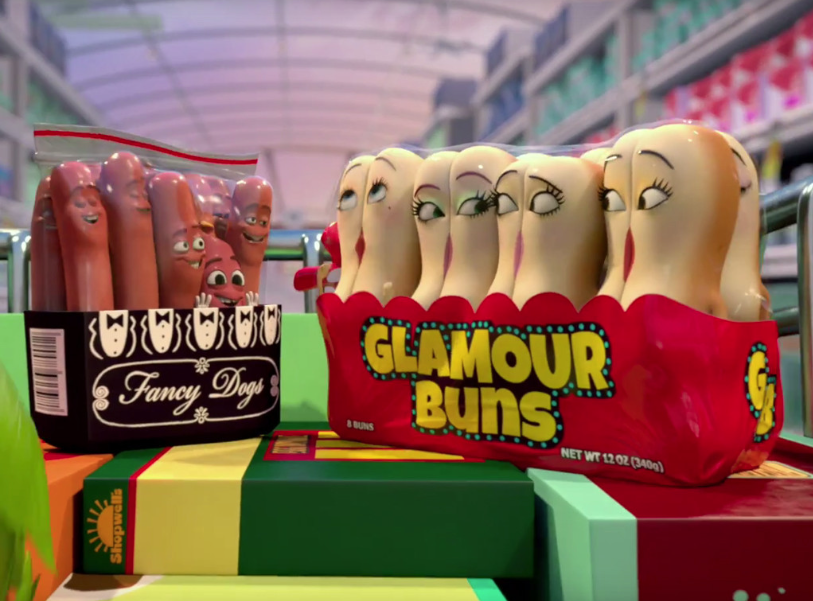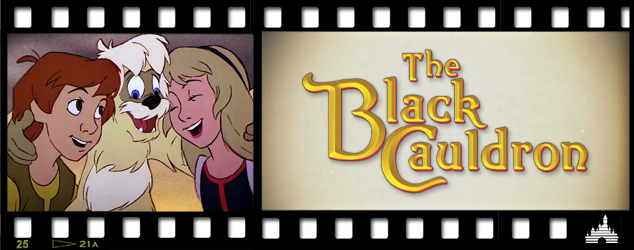
The Black Cauldron was the end of a long and, at times, uncertain era for Disney Animation.
The story of this film’s creation began in 1971 when the company, five years without Walt, optioned the rights to Lloyd Alexander’s high fantasy novel series, The Chronicles of Prydain. Development was on and off with the picture; after the runaway success of The Rescuers in 1977, the big swords-and-sorcery epic based on the Prydain books was a prime candidate for the next big Disney animated feature. Once The Fox and the Hound was completed in 1981, not even two years after the infamous Disney animator exodus spearheaded by an ambitious Don Bluth, The Black Cauldron would begin to pick up momentum. What was the road to its completion like?
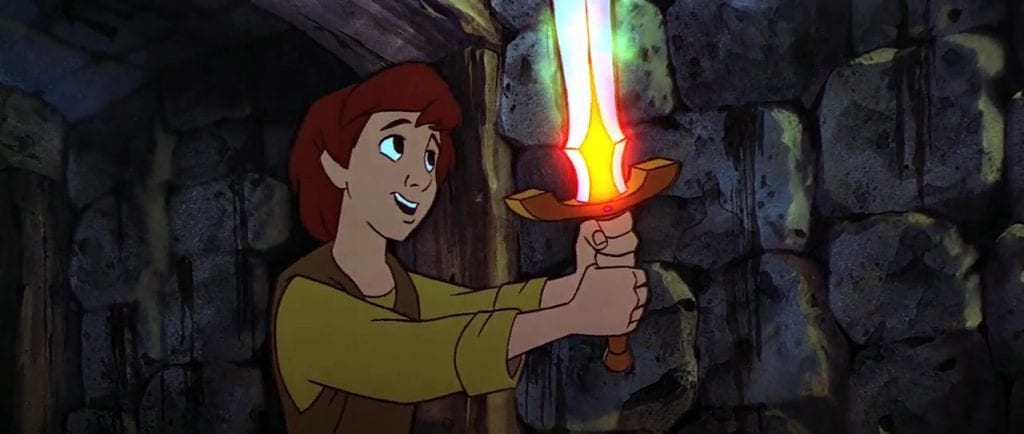
As expected, nothing went swimmingly, for there was an ongoing power struggle between the young animators wanting to try cool new things and the post-Walt management who wanted to stick to “tradition,” thinking they knew what Walt wanted. Producer Joe Hale did what he could to preserve the ideas that the young folk had – for a great example, Tim Burton did a couple out-there character designs that, if they had made it into the movie, would be unlike any design seen in any previous Disney animated feature – but ultimately Hale couldn’t. The top brass wanted a picture that was akin to the earlier Disney films, instead of something fresh and new, perhaps forgetting that Walt Disney’s features excited and amazed because they were trying new things way back when, not recreating something that had worked before. This is something Disney Animation should always keep in mind, actually, whereas today, I feel they are trying new things while serving up what I call “menu favorites” (albeit with some twists).
The Black Cauldron continued into development regardless, and changed many times during its lengthy ride to production. By the time scenes had been animated, other problems had emerged within the Mouse House, notably corporate raider Saul Steinberg looking to buy the company in 1984. This lengthy attempt at a hostile takeover had an impact on the management who were overseeing the production of The Black Cauldron, specifically then-newly minted CEO Ron Miller, who had been in different high positions from the early 1970s up until 1983. Miller resigned near the end of the year; Roy E. Disney made his grand return, and brought in a brand new set of faces to run the company after the fallout. By that point, The Black Cauldron was finally well into production. There was no way to evaluate the already-troubled film. Reportedly, Roy had several issues with the picture and when interviewed on a talk show, he couldn’t even say what the picture was about.
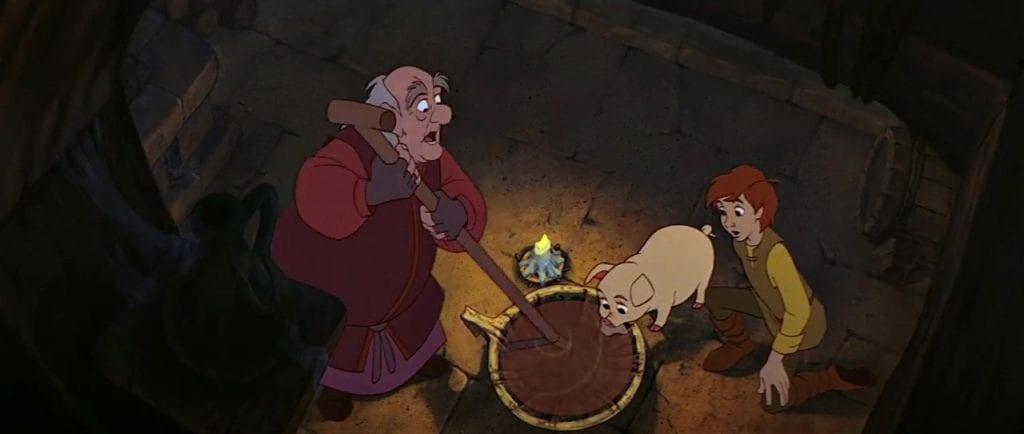
The Black Cauldron comes on like a 1980s fantasy movie made by Disney’s legendary animation house. The studio opted to shoot the film in 70mm, the first Disney animated feature to be done in that format since 1959’s Sleeping Beauty. Massive, lush, layered environments came back, but new techniques would be used from CGI to APT (Animation Photo Transfer, the replacement of Xerography). The then-new and younger Disney animators worked with character designs that were mostly classical, making the project seem like more of the same after working on Mickey’s Christmas Carol and The Fox and the Hound.
Not only was this supposed to be a visually rich return to the Golden Age features, but also a tonal return. The problem with Disney’s early 70s features was that they were mostly innocuous and unchallenging. Instead of being the pictures Walt made – films made to entertain “the audience”, not a target audience – and released during the Golden Age, they were very family-oriented and didn’t take risks. The Rescuers and The Fox and the Hound re-introduced some of the bite that was missing from Disney’s animation in the early post-Walt years, the former doing it better. The Black Cauldron sought to bring back the big adventure with occasional frightening moments, a film that could possibly sit alongside the likes of Snow White, Pinocchio, Bambi, and Sleeping Beauty. A film not limited by budget, as the features of the previous 20 years or so aimed to be a little cheaper, a little more cost-effective. One look at the production design, and you get the sense that Disney was looking to aim big, to make that next Sleeping Beauty, a film that was by that point nearly thirty years old.
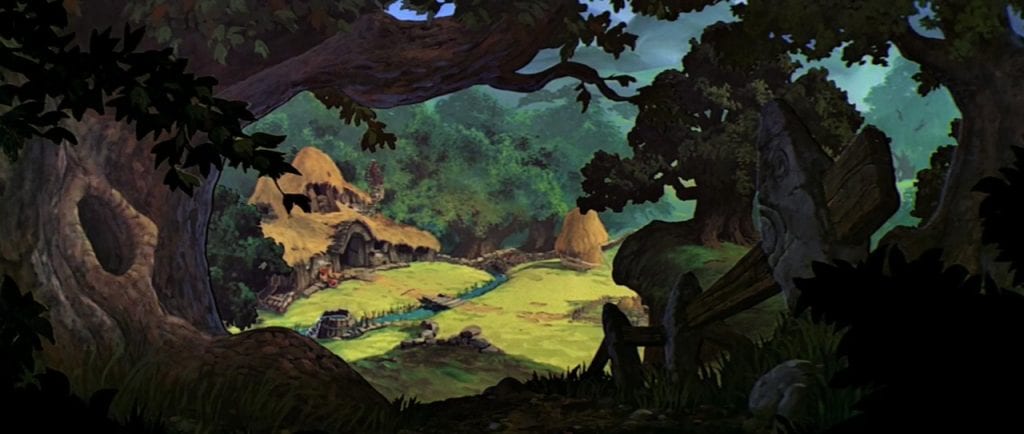
Sadly, The Black Cauldrons’s strengths are mostly in the visual department. The picture was indeed ambitious, not because it was meant to return to the Walt-era magic, but because it promised to go in a bold new direction never before taken. The Black Cauldron should have been Disney Animation’s equivalent to Star Wars, Indiana Jones, and the darker, PG-rated family films (and this is “pre-PG-13” PG we’re talking about here) that came out in the early-to-mid 1980s. These films were capturing the imaginations of audiences young and old, something that American feature animation wasn’t quite doing for years. The Black Cauldron has many moments that evoke those fantasy pictures, and has lots of spectacle that tries to emulate the magic of a Star Wars-like adventure.
Unlike Star Wars, The Black Cauldron feels like it’s trying to be something special instead of being something unique. Star Wars was admittedly inspired by what George Lucas had loved, from serials to Flash Gordon to Akira Kurosawa films, but he and his crew didn’t seek to make a retread of those works. The Black Cauldron feels like it’s trying to fit in with the 70s and 80s fantasy films, while also trying to be a modern Walt-era film. Instead, it’s a rather dull, very rarely frightening film that’s perhaps too dark for the youngest of tykes but not quite palatable to adults. Story and compelling characters matter, but all of that got muddled and lost during its rocky road to completion. Someone who had an eye for story needed to be there, overseeing things, rather than a group of people bickering over which direction to go.
Our hero, Taran, starts out as a fairly likable, immature boy looking for more, long before the Renaissance had beaten that trope into the ground! He thinks being a great big hero and fighting in the war (which we never see or get any hints of throughout the movie) is his destiny, though he’s actually meant to care for an oracular pig named Hen-Wen, a job he despises. Why look after a little pig when you can be clanging swords with evil warlords? By looking into a bowl of water, the swine can see future events, to which Taran is initially oblivious. With that power, she knows the location of the titular cauldron. The menacing villain of the picture, the Horned King, wants the Black Cauldron to resurrect an army of dead soldiers and rule over Prydain.
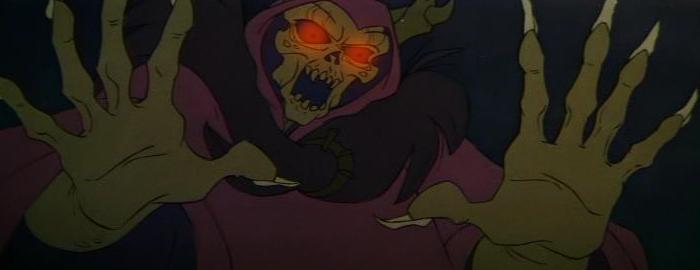
Much has been written about the Horned King and how he’s always been one of Disney’s scariest villains, as well as being a major reason why The Black Cauldron is often labelled as a “darker” and “less Disney” Disney animated feature, but he’s really a very cardboard character. Despite an appropriately intimidating and shadowy voice provided by John Hurt, in addition to a great scary character design, the Horned King is mostly uninteresting. There is considerable build-up to him, giving one the sense that he’ll be one of the legendary Disney villains, up there with the likes of the Evil Queen, the Coachman, and Maleficent. He looks freaky but doesn’t do much, he’s barely forceful, and has others do his work for him. He barely interacts with the characters, encounters Taran once before the climax, and you just don’t quite feel his presence throughout the film, significantly lowering the stakes. Also, again, what about that “war”? Prydain doesn’t seem so war-torn.
The faces Taran meets after the well-done first act closes are also just kind of there. “Princess” Eilonwy has some spunk, but is a throwaway character and a so-so love interest. Also, why does her magic, glowing bauble never show up again after the escape from the castle? Was this forgotten? Or were scenes cut at the last minute? (Before anyone mentions that infamous event that occurred during production, we’ll get there!) Fflewddur Fflam is the most amusing of the bunch, mostly because of his lie-detector harp, but he’s just there for the ride as well. There’s also Gurgi, who Taran meets very early on in the film, a cutesy little fluff ball that serves as comic relief with a voice that sounds kind of like Gollum and a slowed-down Donald Duck. He’s at times annoying, and his design is far cry from how the books depicted him – a bigger, hairy creature with a primate-like face. He almost comes off as an obligatory cute character.
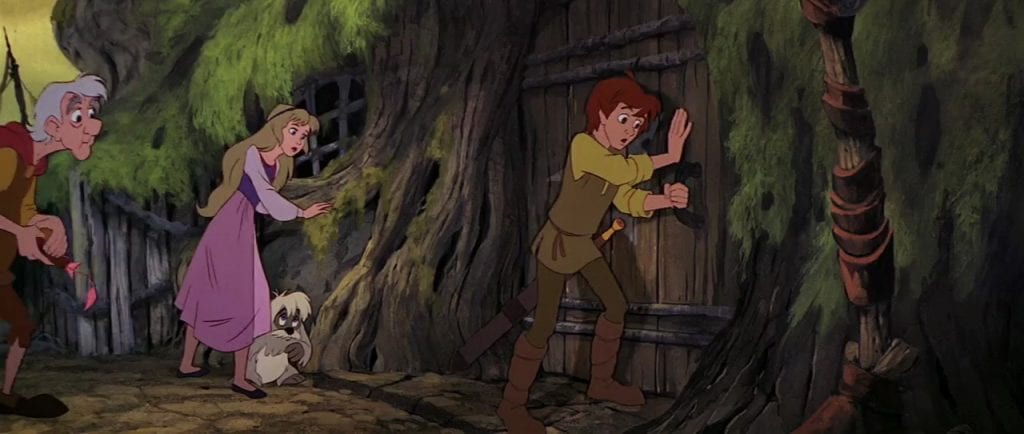
It’s a shame because each of these characters demand and deserve better personalities, and they should be a band of heroes we root for in this fantasy realm. Their designs are pretty much on-point, and the voice actors chosen fit their respective roles are, too, but The Black Cauldron’s middle suffers from issues that weakened the preceding Fox and the Hound’s middle. The middle is rushed and there’s little room for character development. After act two slowly crawls up, the film sleepwalks until the Horned King successfully gets the cauldron. The prolonged slog of a sequence with the Faire Folk should’ve been imaginative, but instead it’s sugary and it reminds you of bubbly 80s Saturday morning cartoons. The encounter with the three witches in the swamps of Morva is bouncy and comical, and while it is pretty funny in parts, it’s another missed opportunity.
Again, our characters aren’t growing, so there’s little to marvel at. Only Taran sees something of an arc, which act three concludes on a proper note. This act also partially saves the day with a pretty cool climax where the Horned King finally unleashes his army of the dead, even though the sequence was infamously edited by a rookie executive Jeffrey Katzenberg, horrified at how much more violent this new-fangled Disney film was supposed to be. Katzenberg slashed more than just violence though, but also pieces he felt were superfluous. Is the lost and legendary 10-12 minutes of footage something that would complete the puzzle and significantly improve the film? Maybe not, but one day many an animation fan would love to see what the studio actually had in store for audiences.
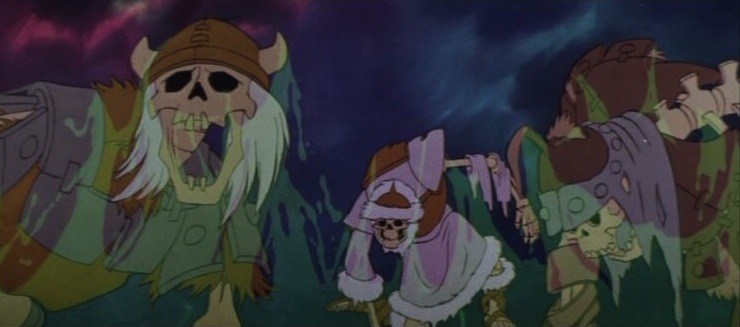
Despite a then-record $25 million being poured into the film, a majority of the art direction is kind of uninspired. The film goes for the scope of Sleeping Beauty, but it eschews that film’s grand, elegant style and tries to go for a 1940s Disney look instead, without really preserving most of that splendor, ultimately feeling very been there-done that. Pretty as those backgrounds look, they don’t amaze the way the locations in Snow White, Pinocchio, Fantasia, and Bambi did. Those succeeded at taking you far away, but also breathing a new kind of life into real-world locations. They did what animation is meant to do. The Black Cauldron’s art is simply nice to look at and is at times immersive, but leaves little.
That all being said, the art direction is at least good on the eyes and is well-done. Some particular shots (such as the Horned King’s Fellbeast-like Gwythaints flying off with Hen-Wen to the Horned King’s castle) do amaze, and the use of various special effects actually works quite well. The Cauldron’s powers generate some wow moments, best of all is a mighty action sequence where the Gwythaints pursue Hen-Wen while Taran tries to rescue her. Its score is a fresh departure too, composed by Elmer Bernstein, which does a more-than-serviceable job at capturing the mood of each location. The Black Cauldron would be the first Disney animated feature to not have musical numbers or songs, another Disney departure that serves the film well. (Though Disney would later do a great song-free adventure with The Rescuers Down Under.)
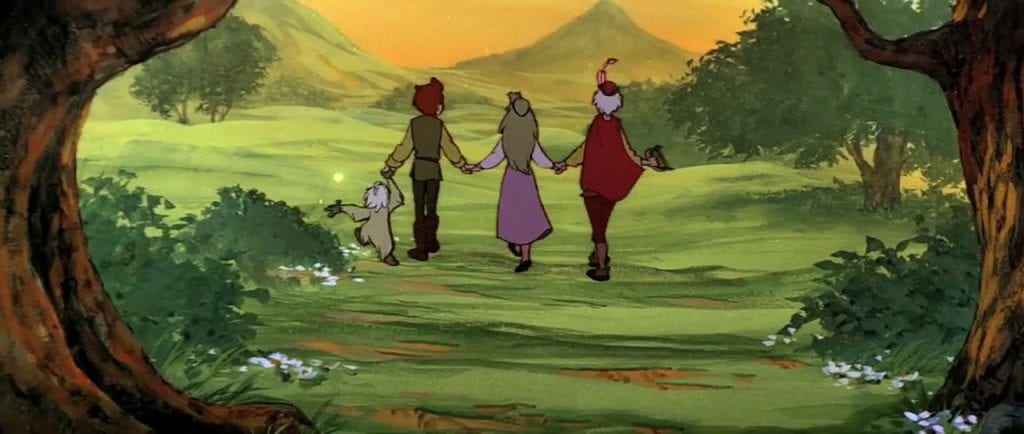
The Black Cauldron is ultimately a standard, run-of-the-mill fantasy adventure that stays safe, recycling parts from better films. While that was clearly not the intention by any stretch, it’s held back by its lack of a strong, fleshed out story and memorable characters. Its action thrills and boasts great animation, and equally satisfying use of effects, but ultimately doesn’t do much in the grand scheme of things. Taran’s arc is generally well thought-out, but the supporting cast doesn’t quite elevate it like it should, and the Horned King is little to crow about.
For all the talk about how bold and dark this film was, it doesn’t really go all out with its terror. The fright factor feels like a showcase more so than an essential part of the story. It’s as if the filmmakers are saying “Look! Scary parts!” Compare that to Snow White, Pinocchio, and Bambi, where the intense moments work because we have fully connected with the characters. That punch emphasizes the moods of those sequences, making them all the more effective. They’re well integrated into their respective stories, which is also why they thrill and have frightened young’uns. In Black Cauldron, these spookier elements kind of feel like they’re checking boxes.
Though after a few lighthearted comedies (like The Aristocats and Robin Hood), this was all welcome, as was the action spectacle. The Black Cauldron at least tried to do something, even if it was held back by several problems. It feels like it could’ve been rich and textured like the best Disney animated films had it not been written and worked on during such a fraught time for the company as a whole, a time where visions really clashed over what direction a project should go in. The energy that the younger animators wanted is scarce, and the regressive attempts to mimic the early days hampers it. Not deserving of such a toxic reputation (which Disney helped make possible by burying the film for years), The Black Cauldron, on its own terms, is just a passable, straightforward adventure with pretty visuals and a few moments that make you wonder, moments that suggest a much greater film: Disney Animation’s answer to the darker family fare of the era that would live on to be a beloved treasure, perhaps one that would’ve help alleviate the stigmas that animation is still effected by.
Edited by: Kajsa Rain Forden


